The race to commercialize a robotic apple harvester continues, with multiple contenders running trials in Washington orchards this year. None of them are ready for full production yet, but all claim they are rounding the final turn.
“It’s going to be a horse race,” said Frank Moore, a 72-year-old retired Hanford engineer who has built his own prototype.
Dave Allan, the tree fruit industry’s unofficial futurist, also believes the technology is close.
“I am quite confident it’s going to work,” said Allan, a semiretired orchard manager and co-owner from Allan Bros. in Naches, and one of the leaders in the industry’s efforts to automate harvest to help fill a labor void expected to deepen in the coming years.
While the engineers perfect their machines, orchardists need to adjust their canopies to match, making sure apples are accessible and branches don’t block the robots.
“The machine is part of the answer,” Allan said. “You got to get the apples so the machine can reach them.”
Getting the robot to pick apples is only part of the battle. It has to work in real-life orchard conditions, such as negotiating branches and managing bins, while high-tech parts must hold up under the stress of constant use in difficult conditions. The companies have now turned their attention to those hurdles, each with different strategies.
Good Fruit Grower caught up with two of the leading contestants, plus a possible wild card, during October’s harvest. Here’s a snapshot:
FFRobotics
Israel’s FFRobotics ran trials in Washington for the first time this year, picking Kanzi apples at Columbia Fruit in Ephrata.
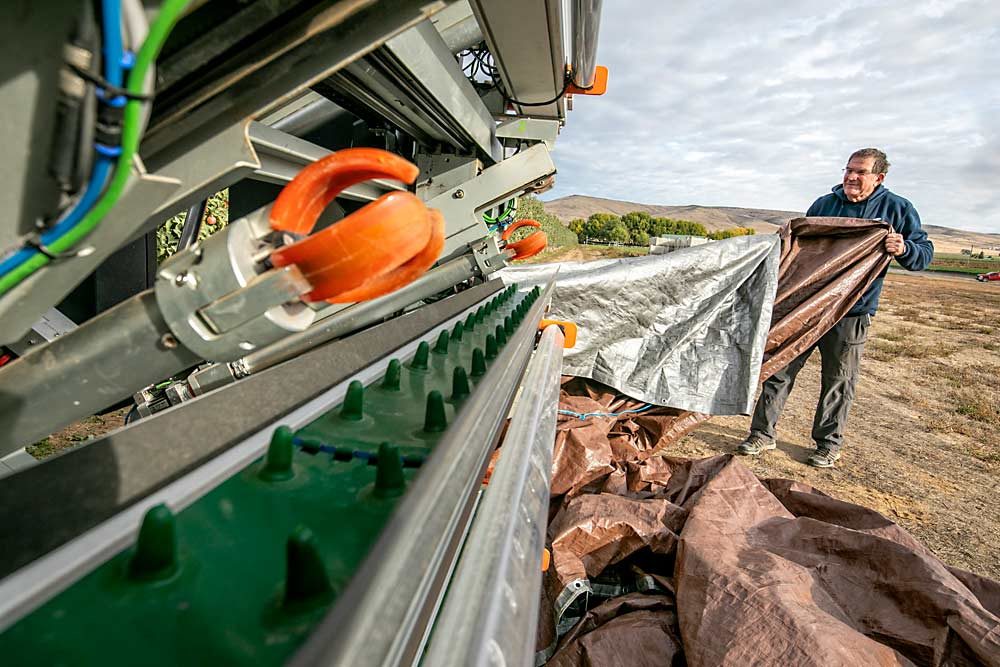
The company uses a computer-guided machine with three-fingered grippers to pick apples and deposit them on a conveyor system that leads to a stem-cutting table and then a bin. Each side of the robot has six arms, arranged in pairs.
FFRobotics aims to pick commercially in Europe and the United States by the 2020 harvest, said company founder and CEO Avi Kahani. He has contracted customers waiting to purchase a machine.
Kahani and a team of engineers spent the fall in Moses Lake, working with Washington State University. Researchers and extension specialists are helping write algorithms that will guide the picking arms around leaves, trellis wires and other obstacles. They also are devising orchard image collection systems that track buds and fruit throughout the year, to enable the machine to be used for thinning and crop load estimation in the future.
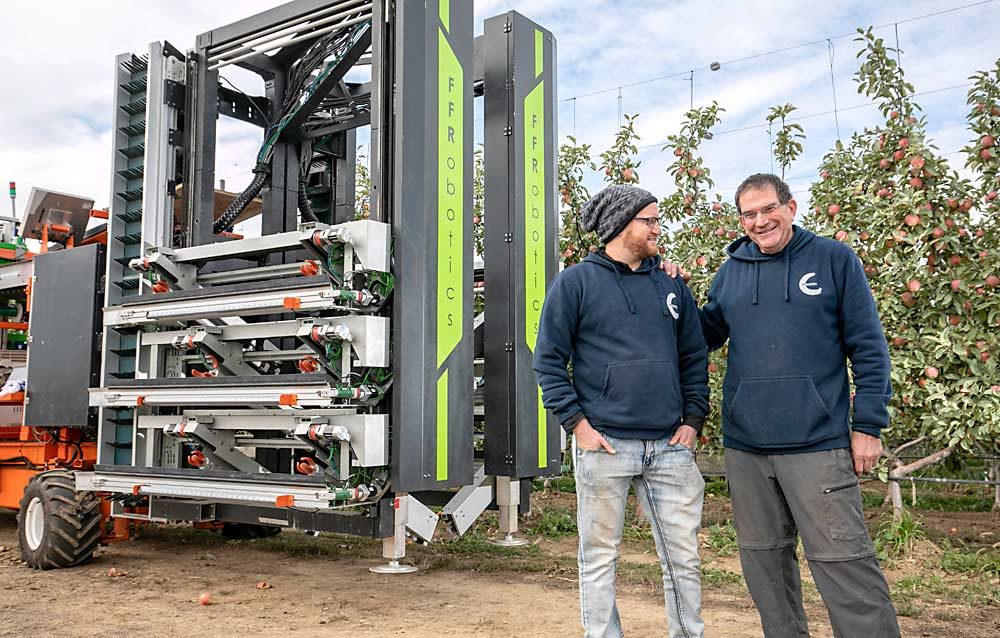
The team is receiving funding from the Washington Tree Fruit Research Commission — a total of nearly $500,000 for 2018 and 2019 with another round to be proposed at the 2020 technology research review in February.
Moses Lake equipment manufacturer Automated Ag collaborates as well, mounting the picking hardware onto its platforms. The prototype is currently mounted to a bin retrieval vehicle, which an operator must drive down the row, stopping after every few trees while the machine images and picks from a stationary position.
The company is making progress but is always looking to improve, Kahani said in October.
For one thing, he would like a more versatile system to work in a variety of orchard structures and with netting. Meanwhile, he suspects the picking mechanism needs improved computer vision and artificial intelligence behind it. WSU engineer Manoj Karkee and his graduate students are developing a new version, with a goal of integration next year, Karkee said.
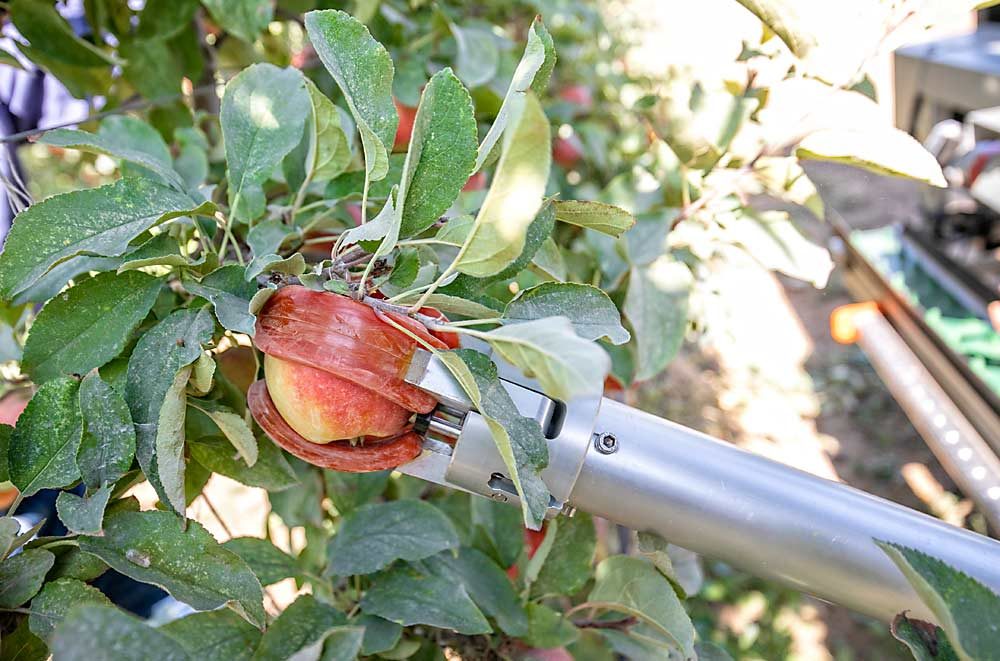
In the end, though, Kahani and his team are after accuracy, not perfection.
“I am not aiming to pick 100 percent of the fruit,” he said. He’s thinking more like 85 percent or 90 percent, with some pieces obscured by wires, branches or in clusters. Picking every single fruit with the robot is technically possible but cost — and time — prohibitive.
He has not come up with an estimate for how fast the machine should pick. He also declined to speculate a price tag for the equipment but aims for growers to achieve return on investment within three years.
Abundant Robotics
Abundant Robotics, the California company propped by $10 million in Silicon Valley venture capital, has again postponed its commercialization goals after fall trials proved engineers need to beef up their hardware, said Dan Steere, CEO of the company. Steere, his co-founders and a team of engineering students spent this fall in roughly a dozen different companies’ orchards, running trials that included fruit quality surveys.
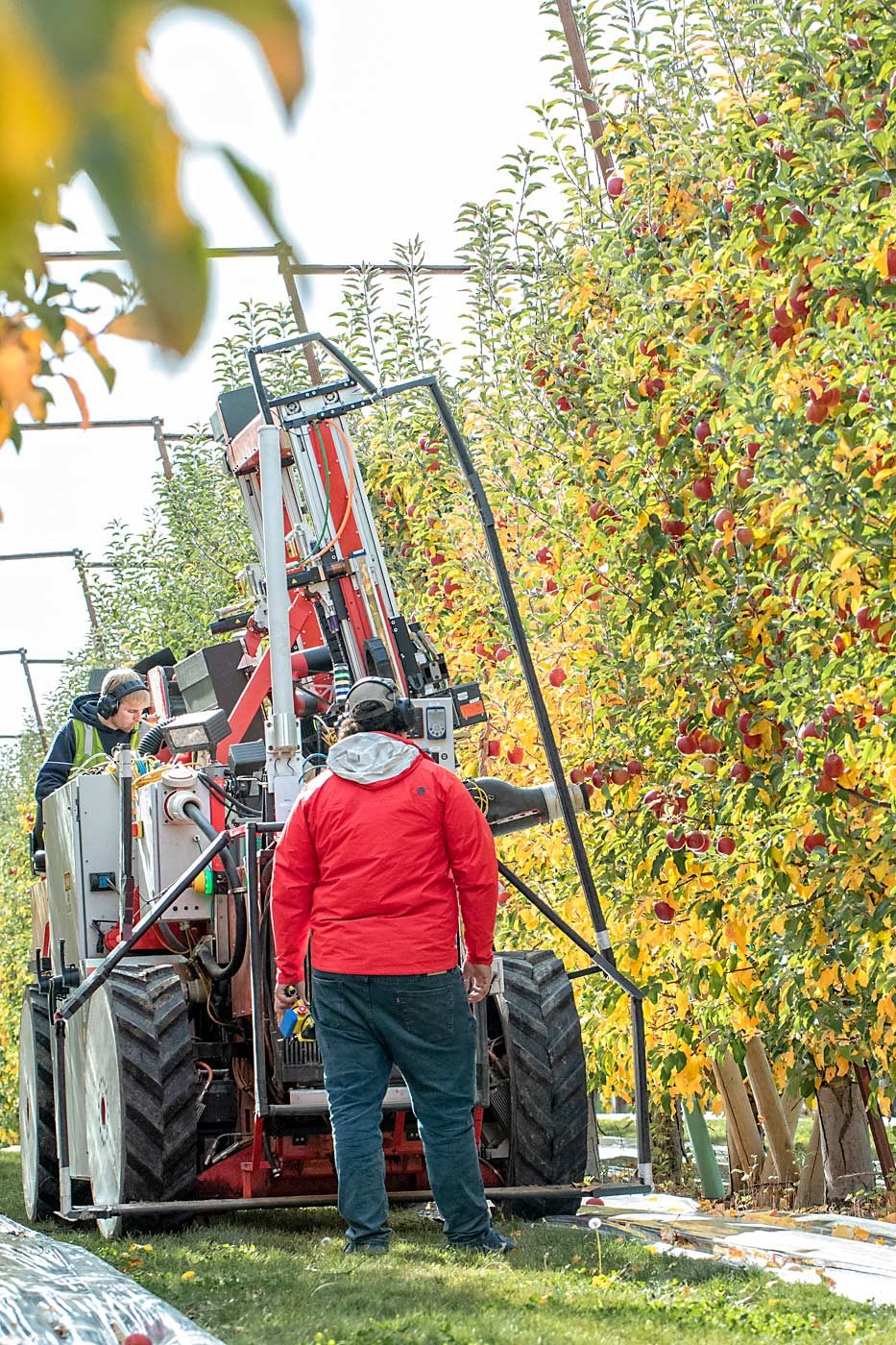
Abundant uses a self-driving machine that can identify fruit, decide if it’s ready for harvest, pick through a vacuum tube and convey apples to a bin. Engineers have all points of that system working, Steere said. The problem is stuff keeps breaking down, so they need another year to beef up their physical components to withstand the rigors of nonstop apple harvest. For example, the gantry and arm components have given them problems.
“The custom automation hardware simply breaks too often right now,” Steere said.
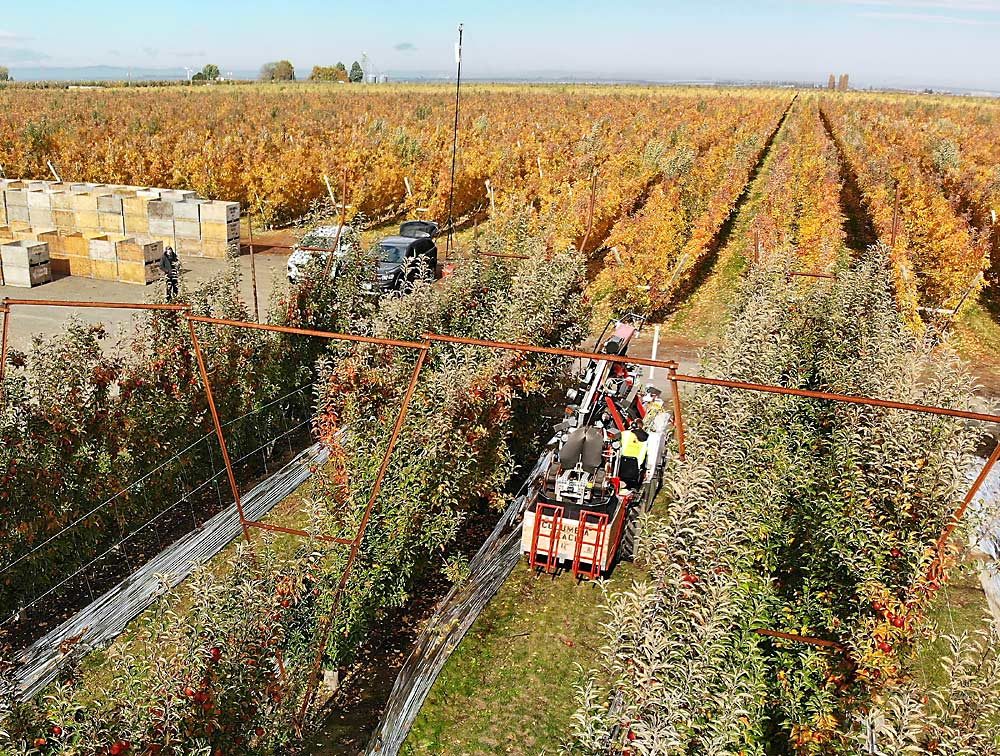
This is not the first delay. The company has run trials in Washington for five years. In 2016, Steere told Good Fruit Grower that 2018 was the commercialization goal. Then, earlier this year, Steere told Good Fruit Grower that Abundant would have multiple machines picking commercially in Washington by the 2019 harvest, after a commercial trial in March for T&G Global orchards, New Zealand’s largest grower.
To be fair, the trials this year are for paid customers, said Steere, who aims to contract with growers for custom harvest before selling the machines directly to them. However, he had planned to begin manufacturing more robots by now, not troubleshooting the prototypes.
He declined to speculate about a new commercialization timetable this time around. “I don’t want to say when we’ll be there, but I can say we’re not that far,” he said.
The company has several customers under contract now. None of them have canceled due to the delay, he said.
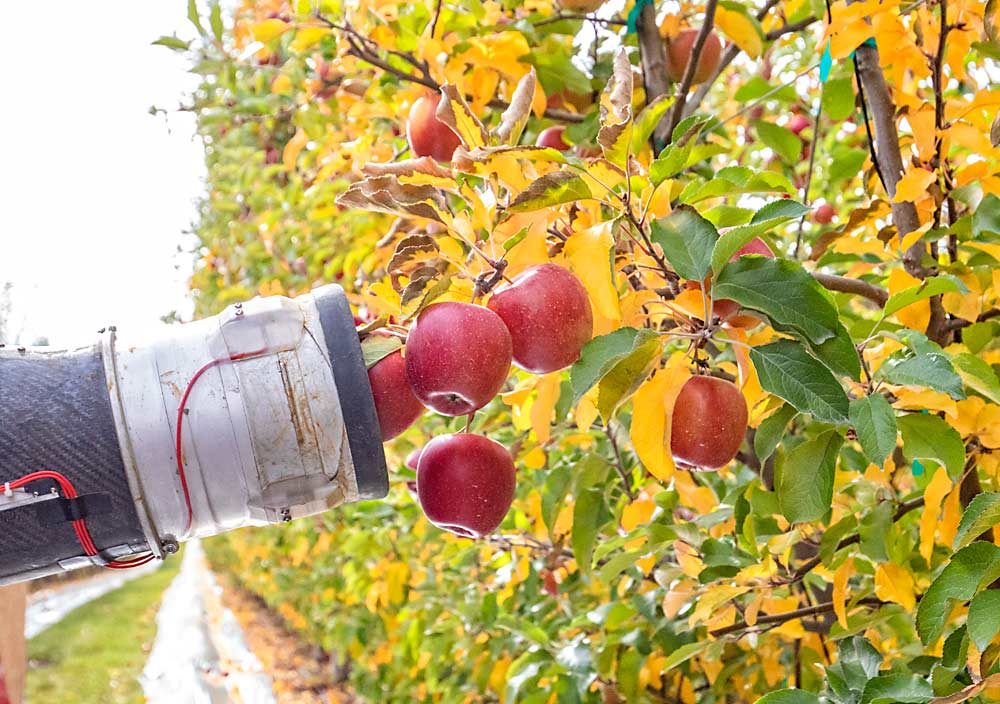
“Our customers are very supportive,” he said. “They’re eager for us to solve this problem for them.”
The Research Commission also was involved in Abundant’s infancy, funding projects for SRI International, from which Abundant spun off in 2015.
HarvestMoore
Frank Moore, a 72-year-old retired engineer with a background in remote operation, is trying his hand at orchard automation with a computer-controlled end effector that saws stems, drops apples through a tube and catches them in water to prevent bruising. He envisions a self-driving machine with four arms on each side that can each pick an apple per second.
His prototype, mounted to a trailer, uses saws set at opposing directions and a dryer tube connected to an upside-down backhoe arm. To transfer from one catch basin to the next, he uses a swimming pool pump.
“I’m doing this on a retirement budget,” he said.
But his vision system maps fruit from bloom to harvest in a sophisticated manner, with cameras that store GPS location information in a database. He claims that gives him an advantage because his picker will know where apples are located the second he fires up the engine.
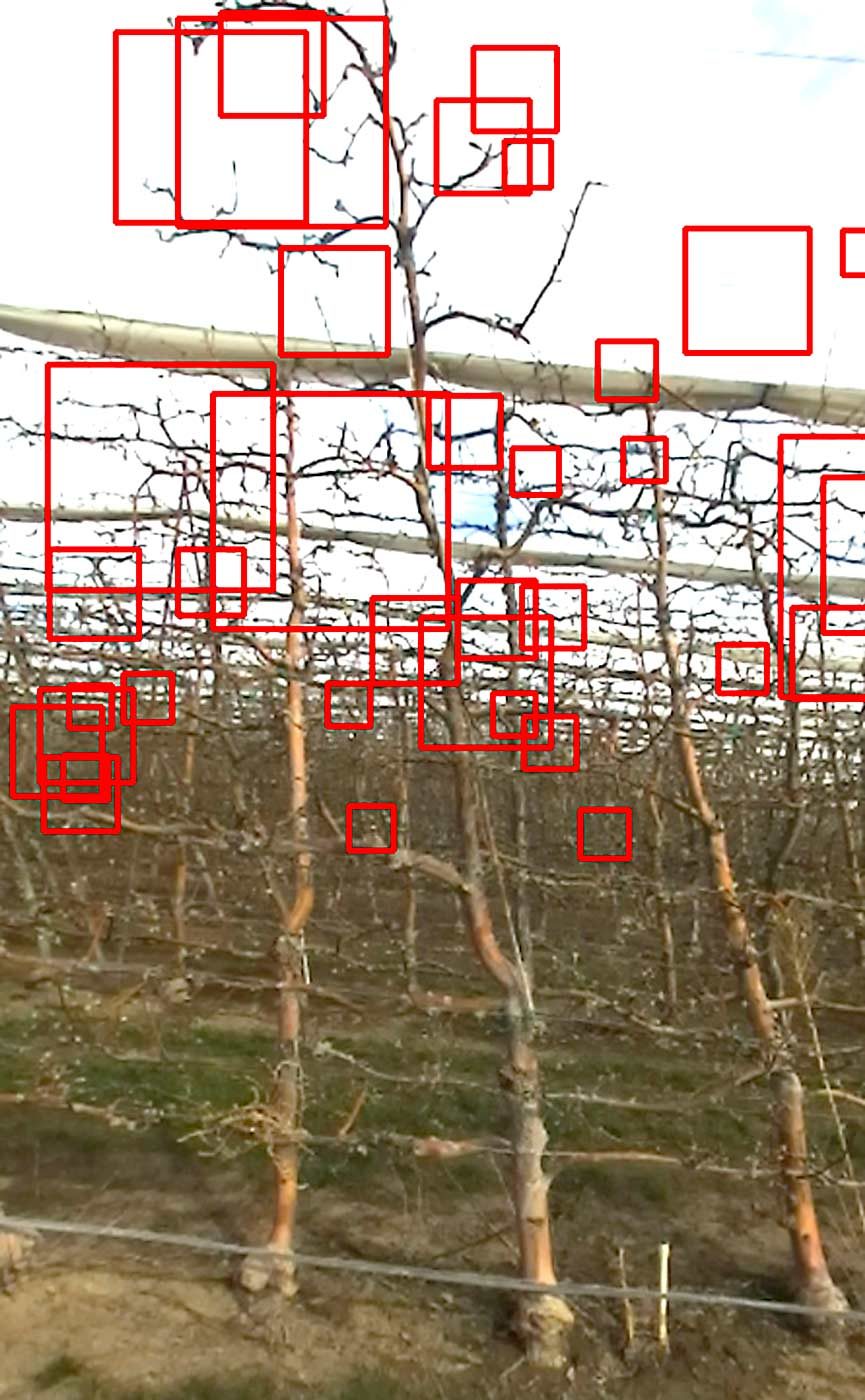
“That’s how I get my pick speed,” he said.
Moore has secured several patents for his work and ran trials in an orchard near Benton City this year.
Moore, who grew up on a wheat and cattle ranch in Kansas, first began thinking of orchard automation designs in the 1980s when a son-in-law worked at an orchard. However, labor economics did not warrant the investment then.
That’s changed. He retired in 2006 from work at the Hanford Nuclear Reservation near Richland, Washington, where he worked with remote manipulation of sensitive materials, including cesium and radioactive spent fuel. He began filing for patents in 2009 and now holds three related to his harvester, with a fourth pending.
Moore’s goal is to find a manufacturing company to buy the concept from him. He figures it will cost between $250,000 and $350,000 to build and sell for up to $500,000. He realizes he is up against well-funded competition.
“That’s why I need somebody to take it over — that’s got some money,” he said. •
—by Ross Courtney






Leave A Comment